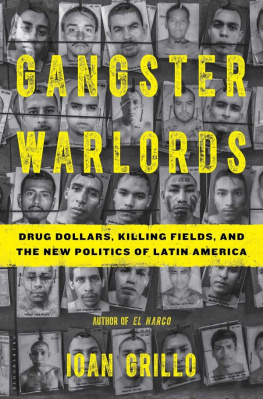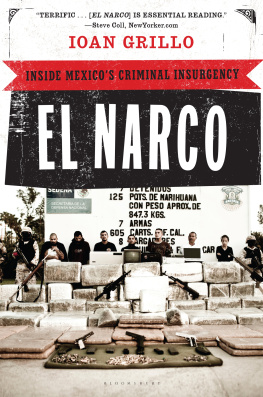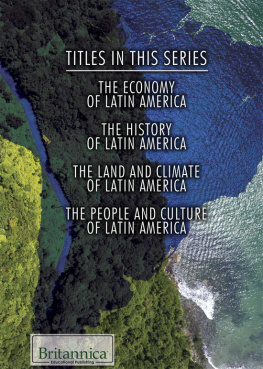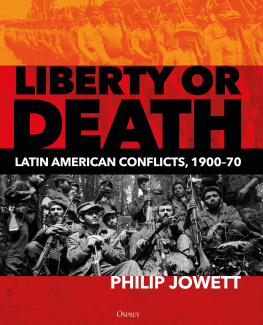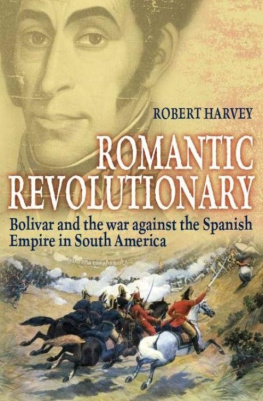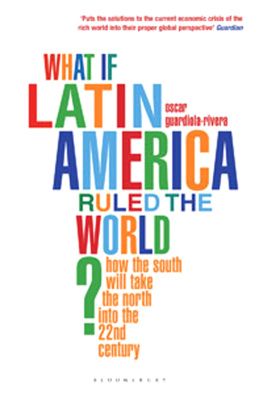
Contents
CHAPTER 1
This book is about the move from the Cold War to a chain of crime wars soaking Latin America and the Caribbean in blood. But it starts in the United States. Specifically, in a Barnes and Noble bookshop in a mall in El Paso, Texas.
I am sitting in the bookshop caf, nursing my third cup of coffee and flicking through a pile of new books. As you do with new books, I am eyeing the photos, skimming the intros, and just feeling and smelling the paper. I am also waiting for a drug trafficker who has spent four decades delivering the products of Mexican gangsters to all corners of the United States.
The man I am waiting for is no criminal warlord controlling a fiefdom in Latin America. Hes a white New Yorker with a university education. That is why I want to start the book here. Latin American journalists complain the U.S. side of the equation is never examined. Who are the partners of the cartels wreaking havoc south of the Rio Grande, they ask. Where is the American narco? Here, I found one.
A curious twist of fate led me to this meeting. A fellow Brit was cycling through the southwest United States on an extended holiday. Texas was nice, but he fancied something edgier, so he slipped over the border to Chihuahua, Mexico. Unwittingly, he entered one of the most violent spheres in the Mexican drug war, venturing into small towns to the west of Ciudad Jurez, at the time the worlds most murderous city. He didnt do too badly, hanging out in cantinas and raising glasses with shady locals. Until gangsters held him in a house, threatened to cut his head off, and got him to call his wife in England and plead for a ransom payment.
Attacks on wealthy foreigners in Mexico are actually very rare, but there have been sporadic cases, some of them deadly. In this case, the thugs had jumped at an opportunity that fell in their lap. Thankfully, they released the Brit on receipt of the cash, and he made it home unscathed. He kept in contact with one of the people he had met on the border, an older man called Robert. While Robert knew the kidnappers, he apparently wasnt involved. He is the man I am going to meet now, one of the gangsters U.S. connections.
The British cyclist had put us in touch, and I talked to Robert over e-mail and then phone to arrange the get-together. He lives on the Mexican side of the border in one of the Chihuahuan towns. But I told him I didnt want to go there after the kidnapping and suggested we meet in El Paso, a stones throw from Jurez but one of the safest cities in the United States. In a Barnes and Noble bookshop. Who would hold you up in a Barnes and Noble?
As I finish my beverage, I spy Robert strolling toward me. He probably spotted me first. He is in his sixties, in jeans and a baseball cap, with sun-worn skin and a raspy voice. I get yet more coffee, and we chat. Hes good company. Soon we decide we want something stronger and move on to a cowboy-themed bar in the mall where they serve local brews in ridiculous-size glasses. I hear Roberts tale as we sip from the flagons.
It goes back to 1968, when the United States was in the midst of the hippie movement and fighting its hottest Cold War battle in Vietnam; when dictatorships ruled most of Latin America, and a recently martyred Che Guevara inspired guerrillas across the continent. Robert is from upstate New York, but in 1968 he went to university in New Mexico. Here he had the fate of landing a roommate from El Paso who had a cousin in Ciudad Jurez. His roommate told him he could buy marijuana for forty dollars a kilo from his cousin. This lit a fuse in Roberts mind; he knew that back home in New York, this amount sold for three hundred dollars.
The basic business of importing is buying for a dollar and selling for two. But with drugs, Robert realized, he could buy for a dollar and sell for more than seven. And he didnt even need to advertise. This was after the summer of love, and American youngsters were desperate for ganja from wherever they could get it, feeding a mushrooming industry south of the border.
I was young, I was broke, and I was hungry, Robert says. Then marijuana came like a blessing We scraped our money together for the first load. When it came through, we bought another. Then another.
It is hard for most of us to fathom a business with a markup of 650 percent. You put in fifteen hundred bucks and you get back more than ten grand. You put in ten and get back seventy-five. And in two more deals you can be a multimillionaire. Narco finances turn economics inside out.
As Robert made regular drives back east with his car trunk stuffed with ganja, he could go through school without even having loans. I was living like a rich kid, driving a nice car, living in a big place, he says.
When he graduated, he had a business to go into. He traveled to Chihuahua to buy bulk loads of marijuana and partied in Jurez discos with rising drug lords. He spread out his commerce to new horizons. He traveled to Mississippi and Alabama, where he sold to the Dixie Mafia, a network of villains in the Appalachian states. He went to San Francisco to sell to students on the lawns of Berkeley. He bought houses and nightclubs with suitcases of cash.
However, Roberts drug-dealing dream hit a wall in the late seventies when he got nabbed by agents from the Drug Enforcement Administration. The DEA did what it calls a buy and bust. An undercover agent pretended to be a dealer and asked for three hundred pounds of grass from Roberts partner. After police nabbed the partner in his car, they stormed Roberts luxury house, arrested him in his swimming trunks, and grabbed sacks of weed from the kitchen and garage.
This is the flip side of narco economics. Robert splurged on lawyers, got his assets seized, and served close to a decade in federal prison. Yet after he got out, he went back into the trade, moving ganja and a little cocaine with a new generation of Mexican traffickers. This time, he kept a lower profile, shifting smaller amounts to stay off the radar. He carried on past middle age, through marriages and divorces, booms and busts, through the end of the Cold War and the opening of democracy across the Americas. By the time he hit his sixties, he suffered from chronic asthma and heart disease. And he was still smuggling weed.
When Robert started trafficking drugs, his Mexican colleagues were a handful of growers and smugglers earning chump change. They needed Americans like him to get into the market. But over the decades, the narco trafficking networks grew into an industry that is worth tens of billions of dollars and stretches from Mexico into the Caribbean to Colombia to Brazil. Mexican gangsters transformed into cartels and established their own people stateside, often their family members. Two of their biggest distributors were the Chicago-born twin sons of a Durango heroin king. While Robert had been a big shot back in the day, he fell to the position of a small-time smuggler.
South of the border, the cartels spent their billions building armies of assassins who carry out massacres comparable to those in war zones and outgun police. They have diversified from drugs to a portfolio of crimes including extortion, kidnapping, theft of crude oil, and even wildcat mining. And they have grown to control the governments of entire cities and states in Latin America.
Back in the old days, it was nothing like this, Robert says. They were just smugglers. Now they prey on their communities. They have become too powerful. And many of the young guys working for them are crazy fucking killers who are high on crystal meth. You cant deal with these people.
Next page
